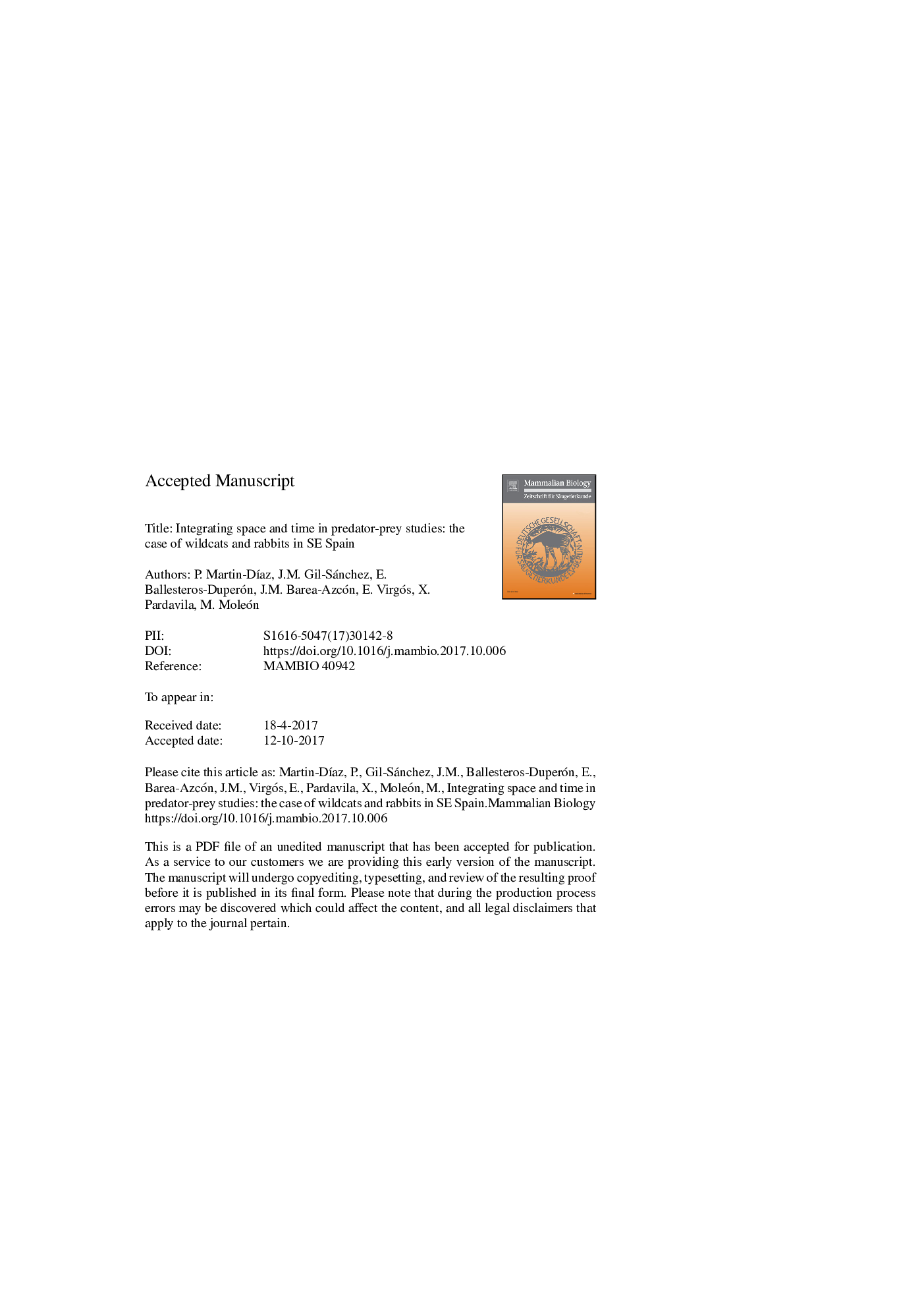| کد مقاله | کد نشریه | سال انتشار | مقاله انگلیسی | نسخه تمام متن |
|---|---|---|---|---|
| 8475772 | 1550459 | 2018 | 33 صفحه PDF | دانلود رایگان |
عنوان انگلیسی مقاله ISI
Integrating space and time in predator-prey studies: The case of wildcats and rabbits in SE Spain
دانلود مقاله + سفارش ترجمه
دانلود مقاله ISI انگلیسی
رایگان برای ایرانیان
کلمات کلیدی
موضوعات مرتبط
علوم زیستی و بیوفناوری
علوم کشاورزی و بیولوژیک
علوم دامی و جانورشناسی
پیش نمایش صفحه اول مقاله

چکیده انگلیسی
How species use space and time is central in ecology and evolution as well as for the conservation and management of vulnerable species. Unfortunately, this information is scarce for elusive species such as the threatened European wildcat (Felis silvestris silvestris), especially in Mediterranean areas. Using radio-tracking and camera-trapping, we studied the habitat selection and the diel activity of a wildcat population in SE Spain, with particular emphasis on the relationships between wildcats and their main prey, the European rabbit (Oryctolagus cuniculus). First, we used Generalized Linear Mixed Models (GLMMs) to analyse the influence of vegetation, rabbit abundance, topography and humanization on wildcat presence at several spatial scales and according to wildcat activity. Second, we used Spearman's rank correlations to assess the spatial relationship between the relative abundance indexes (RAIs) of wildcats and rabbits. Third, we used kernel density estimates to determine the daily activity patterns of wildcats and rabbits, and compared them by calculating the coefficient of overlap Î. Patch complexity, rabbit abundance, slope and cover of dense scrubs were the most influential variables on wildcat presence. However, the effects of some environmental variables were scale-dependent. The relationship between rabbit abundance and wildcat presence was positive for the smaller scales and, unexpectedly, negative for the largest one. This result was supported by the quadratic relationship between wildcat RAI and rabbit RAI, indicating that wildcats generally avoided the highest rabbit abundance areas. We observed a typical nocturnal activity for wildcats, which surprisingly did not synchronize with the rabbit activity patterns. Rabbit antipredatory strategies, human pressure avoidance behaviour in wildcats and competition with other carnivores could be behind the observed spatiotemporal mismatch between wildcats and rabbits. Overall, our study highlights the importance of combining spatial and temporal approaches to obtain an integrative view of how resources are exploited by wildlife.
ناشر
Database: Elsevier - ScienceDirect (ساینس دایرکت)
Journal: Mammalian Biology - Volume 88, January 2018, Pages 114-122
Journal: Mammalian Biology - Volume 88, January 2018, Pages 114-122
نویسندگان
Paula MartÃn-DÃaz, Jose MarÃa Gil-Sánchez, Elena Ballesteros-Duperón, Jose Miguel Barea-Azcón, Emilio Virgós, Xosé Pardavila, Marcos Moleón,